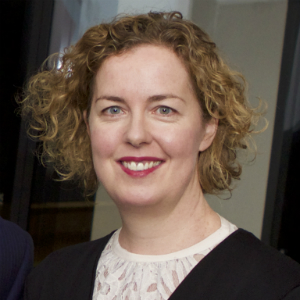Dealing with counsel can be stressful for practitioners, but there are easy ways for lawyers to make the most of their relationship with a barrister, Kate Richardson SC says.

Kate Richardson SC of Banco Chambers has offered some sage advice about how lawyers can cultivate a better working relationship with barristers.
Ms Richardson offered two tips for overcoming mismatched expectations on a matter: clearly identify key dates – agree to a timetable as soon as possible; and ensure that instructions clearly state what is required of counsel.
“In terms of advisory work, for a client in both litigation and commercial non-litigation, key dates are important,” Ms Richardson said.
“In terms of clarifying the role of counsel at the outset of a matter, make the barrister aware of what product is required. If you want advice on a topic, be really clear about whether you want written advice or oral advice,” she said.
She added that the choice to request written or oral advice should rely on different factors. Cost is one of those considerations, because written advice is a more time-intensive process.
Ms Richardson suggested that in some cases, obtaining expert advice from a barrister in writing may help focus their views, sooner. However, she said that this needed to be balanced against whether it is a cost the client has to incur or not.
“One benefit of a written advice is that it will force the barrister early on to really focus on the matter and commit themselves in writing to their views, so you may get attention and focus out of a barrister earlier on through written advice,” Ms Richardson said.
“But you do need to be clear, otherwise a barrister may go off and do written advice and incur costs that are really not what the client wanted anyway,” she said.
Other things lawyers should think about when being clear in conveying the role they want a barrister to take on in a matter is the extent a barrister needs to be involved in preparation of evidence and whether counsel will be appearing for directions hearings or notice of motions. Ms Richardson said that she has seen a trend in recent times of more solicitors running directions hearings themselves.
Sharing insights about what makes a winning recipe for briefing and instructing a barrister, Ms Richardson began with memorandums.
Unnecessarily "voluminous memorandums", usually provided by big law firms rarely assist the barrister in working on a matter, Ms Richardson said. The silk said that in many cases, preparing large and detail-rich memorandums, when they have not been asked for, can be a waste of client money.
“This can be a problem in big law firms,” Ms Richardson said.
“Sometimes I get a memorandum […] and I just think, ‘How much did that cost the client?’ That is not of really much assistance, and it makes me feel sick what fees are being generated.
“Particularly if I am briefed by a big law firm, I say ‘Do not write anything unless I say I’d really want something on this aspect of privilege’, for example, and then they’ll get an army of young, clever people to go off and write something on it. I wouldn’t be generating that kind of stuff at unnecessary cost,” she said.
Other things to avoid when engaging with counsel include calling chambers off the hook instead of corresponding by email; phoning the silk rather than a junior on a matter; and sending dense documents by email.
Ms Richardson advised that the best way to approach preparation of a brief is to consider the kind of matter and the particular preference of a barrister – every case is different and may require its own approach. For example, how a lawyer collates the order that documents appear in a brief, be it in chronological or topic-base order, will depend on the type of matter.
“Normally if it’s litigation, you will want the pleadings and particulars up the front, court orders, key correspondence together – your evidence, the other side’s evidence, subpoenaed documents – just so it’s made in a sequential, logical order,” Ms Richardson said.
“But in a lot of other matters, [such as] work in health matters which deal with hospital or clinical notes, it really doesn’t make sense to have things in chronological order because you should have doctor’s notes in one section and then clinical notes, and then you have expert reports – things are done in effect by topic or source of documents,” she said.
When preparing a brief, Ms Richardson said lawyers should identify the following things for counsel:
Ultimately, it is clear communication that will help put a barrister and a lawyer on the same page.
Ms Richardson acknowledged that while there are some barristers who can be difficult to deal with, lawyers who are engaged and proactive in the process do help achieve the best outcome for a client.
“If it’s a voluminous brief, it’s probably worth talking to the barrister and asking them about the order they want things in,” she said.
Ms Richardson’s talk was given last month as part of the Salvos Legal Lecture Series. Other guest speakers at the 11 March seminar included barristers David Pritchard SC, Kate Williams SC, forensic psychologist Amanda White, and the director of Forensic Document Service Michelle Novotny.

L-R: David Pritchard SC, Luke Geary and Kate Richardson SC at the Salvos Legal lecture series. Photo courtesy Rocco Rinaldo.